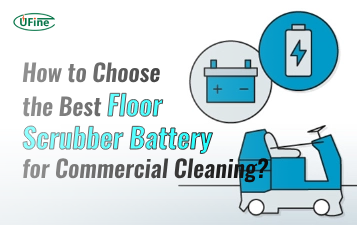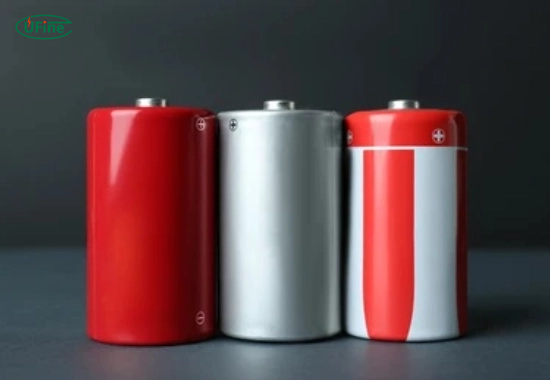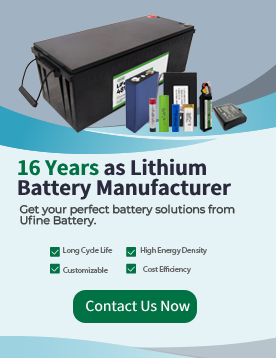When shopping for rechargeable C batteries rechargeable C batteries, it’s easy to assume they’re all the same—the same size and shape—so they must work the same way, right?
Not quite. While C-size rechargeable batteries may look identical on the outside, a lot is happening under the surface, making each battery very different in terms of performance, chemistry, lifespan, voltage, and usage.
In this detailed guide, we’ll explain everything so you can confidently choose the right C rechargeable battery for your needs—whether for a flashlight, toy, radio, or emergency equipment.
Part 1. What is a C-size rechargeable battery?
A C-size rechargeable battery is a medium-sized cylindrical battery commonly used in portable devices that need more power than AA or AAA batteries can provide. It’s larger than AA batteries but smaller than D cells.
Unlike disposable alkaline batteries, rechargeable C batteries can be used hundreds of times, making them a more eco-friendly and cost-effective choice over time.
Part 2. Are all C-size rechargeable batteries the same?
No, they’re not. Even though C rechargeable batteries share the same physical size, they can be wildly different inside. Here’s what sets them apart:
- Battery chemistry (NiMH, NiCd, Li-ion)
- Voltage output
- Capacity (measured in mAh)
- Number of charge cycles
- Discharge rates
- Brand reliability
So, while they might fit into the same device, not all C batteries will perform the same way—or even work at all, depending on your device.
Part 3. What are the main types of C rechargeable batteries?
There are three main types of rechargeable C batteries, each with pros and cons.
1. NiMH (Nickel-Metal Hydride)
- Most popular for consumer use
- Nominal voltage: 1.2V
- No toxic materials
- Rechargeable 500–1000 times
- Good for high-drain devices
- Minimal memory effect
2. NiCd (Nickel-Cadmium)
- Nominal voltage: 1.2V
- Older technology
- Rechargeable up to 800 times
- Strong performance in cold temperatures
- Suffers from the memory effect
- Contains toxic cadmium (less eco-friendly)
3. Li-ion (Lithium-ion)
- Nominal voltage: 3.6V–3.7V
- Higher energy density
- Lightweight
- Rechargeable 300–500 times
- Not always compatible with devices expecting 1.2V or 1.5V
Quick Tip: NiMH is the safest and most compatible option for most household devices.
Part 4. Why battery capacity (mAh) matters
mAh stands for milliampere-hour, which tells you how much energy a battery can store.
- A 5000mAh C battery will last longer than a 2500mAh one.
- High-capacity batteries are ideal for toys, radios, and emergency kits.
- But beware of inflated capacity claims from cheap brands.
Always check actual test reviews, especially if the price seems too good.
Artikel Terkait: AA vs C vs D battery: A Comprehensive Comparison
Part 5. Voltage differences: Why 1.2V vs. 1.5V matters
Most rechargeable C batteries output 1.2 volts, while disposable alkaline C batteries output 1.5 volts. That might not sound like a big difference, but it can be in some devices.
- 1.2V is usually fine for toys, radios, and LED lights.
- Some devices require a full 1.5V to function correctly.
- Li-ion C batteries output 3.6V–3.7V, which may damage 1.5V devices.
Always check your device’s voltage requirements before using rechargeable batteries.
Part 6. Recharge cycles: How long do they last?
The number of times a battery can be recharged is called its cycle life. Here’s a breakdown:
| Battery Type | Average Charge Cycles |
|---|---|
| NiMH | 500–1000 |
| NiCd | 300–800 |
| Li-ion | 300–500 |
Pro Tip: Use a smart charger to avoid overcharging and extend battery life.
Part 7. Which brands offer the best C rechargeable batteries?
Not all brands are created equal. Some are built to last, and others are not so much.
🔝 Top-rated brands:
- Energizer Recharge Universal C
- Duracell Rechargeable C
- EBL High Capacity C
- Tenergy Premium C
- Powerex Imedion C
These brands offer reliable performance, accurate capacity ratings, and longer lifespans. Avoid generic or ultra-cheap batteries with no reviews or certifications.
Part 8. Common myths about C rechargeable batteries
Let’s clear up a few misconceptions:
- Myth 1: All C batteries are interchangeable → ❌ False! Voltage and chemistry matter.
- Myth 2: Higher mAh always means better battery → ❌ Not always. Quality and discharge rate matter too.
- Myth 3: You can use any charger → ❌ Dangerous! Always use a charger made for C rechargeable batteries.
Part 9. How to test C rechargeable battery performance
Want to know if your battery is still good? Here are three easy methods:
- Use a battery tester with a C-cell slot
- Measure voltage with a multimeter (should be close to 1.2V when charged)
- Test run time in a known device (e.g., flashlight or toy)
If your battery dies or drops voltage fast, it’s time to replace it.
Part 10. Safety tips and common mistakes
Keep your batteries working longer with these simple safety tips:
- ✅ Store in a cool, dry place
- ✅ Use a smart charger
- ✅ Charge batteries before storing them for long periods
- ❌ Don’t mix old and new batteries
- ❌ Never use damaged or leaking batteries
- ❌ Don’t leave batteries in devices for months
Part 11. Rechargeable vs disposable: Which is cheaper?
Let’s say you buy:
- 4-pack of NiMH C batteries: $20 (rechargeable 500+ times)
- 4-pack of disposable C batteries: $6 (used once)
Over 500 uses:
- Rechargeable = $0.04 per use
- Disposable = $750 total cost 💸
Verdict: Rechargeable C batteries are way cheaper in the long run.
Part 12. Environmental impact of rechargeable C batteries
Using rechargeable batteries helps reduce:
- Landfill waste
- Heavy metal pollution
- Carbon emissions from battery production
Also, many brands now offer recyclable packaging and take-back recycling programs.
Remember to recycle old batteries properly—never throw them in the trash.
Part 13. Best C rechargeable batteries in 2025 (with specs)
Here are the top models this year based on reviews and performance:
| Brand | Capacity | Chemistry | Recharge Cycles | Price (USD) |
|---|---|---|---|---|
| Energizer | 2500mAh | NiMH | 1000 | $18 (2-pack) |
| EBL High Cap | 5000mAh | NiMH | 1200 | $22 (2-pack) |
| Tenergy | 4000mAh | NiMH | 1000 | $19 (2-pack) |
| Powerex | 5000mAh | NiMH | 1000 | $24 (2-pack) |
| Duracell | 3000mAh | NiMH | 400 | $16 (2-pack) |
Part 14. Can you use AA in place of C batteries?
Some people try using AA batteries with C-size adapters, especially in a pinch. This can work, but…
- AA batteries have a much lower capacity
- Devices may not run as long
- Not ideal for high-drain equipment
Only use this as a temporary solution.
Part 15. FAQs about C rechargeable batteries
Are all C rechargeable batteries 1.2 volts?
Most are, especially NiMH and NiCd. However, Li-ion C batteries can be 3.6V or higher, which may not be safe for all devices.
Can I use rechargeable C batteries in any device?
Not always. Devices that require 1.5V alkaline batteries may not work well with 1.2V rechargeables. Always check your device’s specs.
How many years do rechargeable C batteries last?
With good care, NiMH C batteries can last 3–5 years. Cheaper ones may only last 1–2 years, significantly if overcharged or poorly stored.
Are Li-ion C batteries safe?
They can be used, but only on compatible devices and charged with the correct charger. Never use a 3.7V battery in a 1.5V-only device.
Why do some C batteries die so quickly?
Often due to:
- Low-quality or fake batteries
- Incompatible chargers
- Over-discharge
- Storing in hot or humid environments
Can I mix different brands of rechargeable batteries?
It’s not recommended. Mixing batteries with different capacities or chemistries can cause uneven discharge, reduce the lifespan of your device, or even damage it.
Do rechargeable C batteries leak?
Rarely. NiMH batteries are much less likely to leak than alkaline ones. But if damaged or stored improperly, any battery can leak.
What’s the battery memory effect?
It’s when a battery “remembers” a lower capacity if it’s not fully discharged before recharging. This primarily affects NiCd, not NiMH.
Can I charge C batteries with an AA charger?
Only if the charger supports C-size cells can forcing a C battery into an AA slot damage the battery or the charger.
Are rechargeable C batteries worth it?
Yes, 100%. Investing in quality rechargeable batteries will save you money, reduce waste, and ensure consistent performance.
Related Tags:
More Articles

How to Choose the Best Floor Scrubber Battery for Commercial Cleaning?
Selecting the ideal floor scrubber battery ensures a long runtime, rapid charging, and minimal maintenance for efficient commercial cleaning operations.
Battery for Blower vs Battery for Leaf Vacuum: Which One Should You Choose?
Battery for blower vs leaf vacuum—learn the key differences in power, fit, and runtime to choose the right battery for your outdoor tool needs.
How to Choose the Right Battery for Blower?
Choosing the right blower battery? Consider voltage, capacity, chemistry & usage. This guide helps match the best battery for peak performance.
How to Choose the Best Insulated Battery Box for Lithium Batteries?
Choosing the Best Insulated Battery Box for Lithium Batteries? Discover key factors such as size, material, and safety for optimal protection and performance.
7 Critical Elements on a Lithium Battery Shipping Label
What must be on a lithium battery shipping label? Learn 7 key elements to ensure safety, legal compliance, and correct handling across all transport modes.




